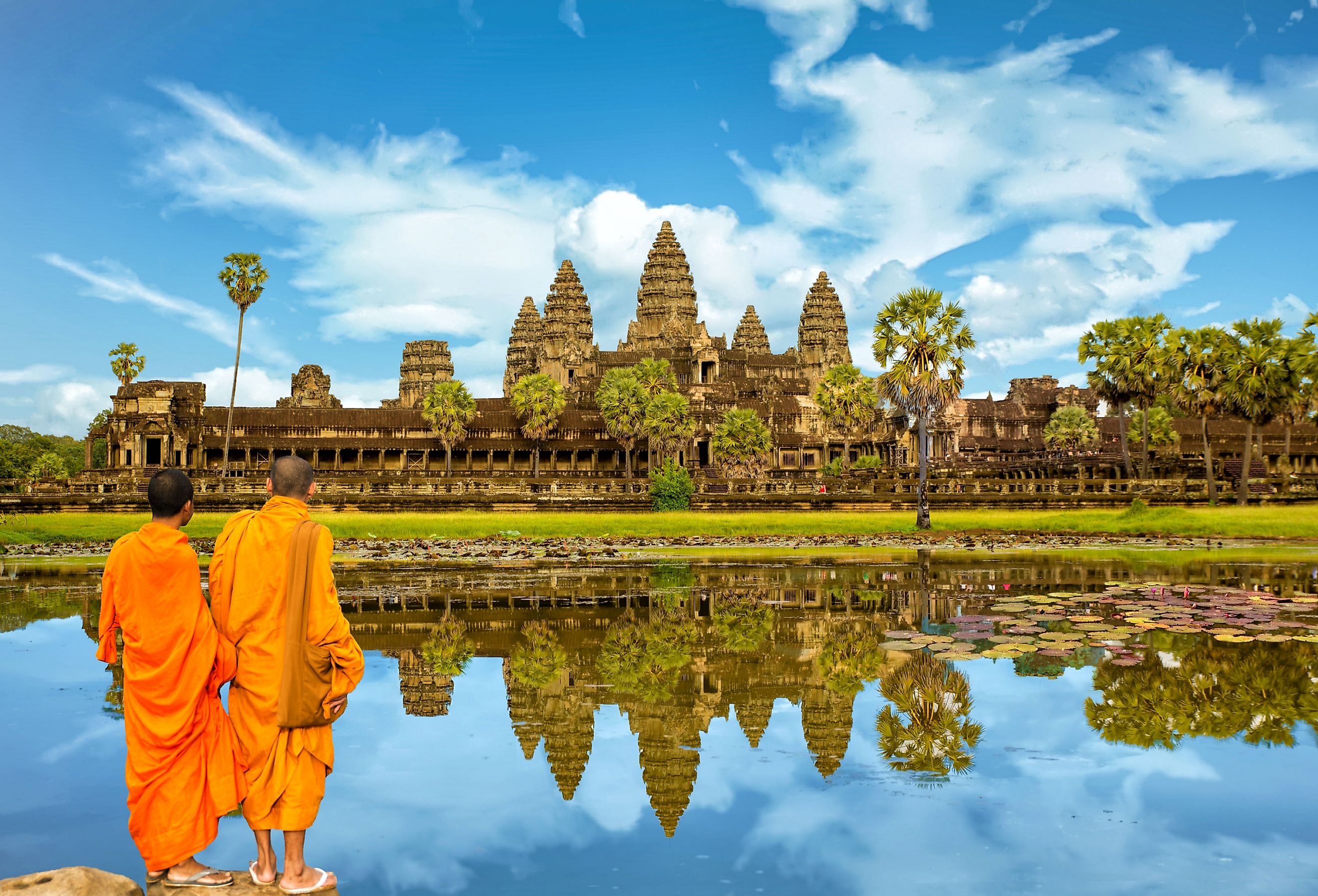
Lost City of Angkor Wat
Scattered throughout the world are thousands of lost cities, abandoned through time. Beautiful monuments carrying a rich history survived changing seasons, wars, and the growing forces of nature around them. One of those cities is Angkor Wat, a place so breathtaking, it almost made the list of the seven wonders of the world.
What is Angkor Wat?
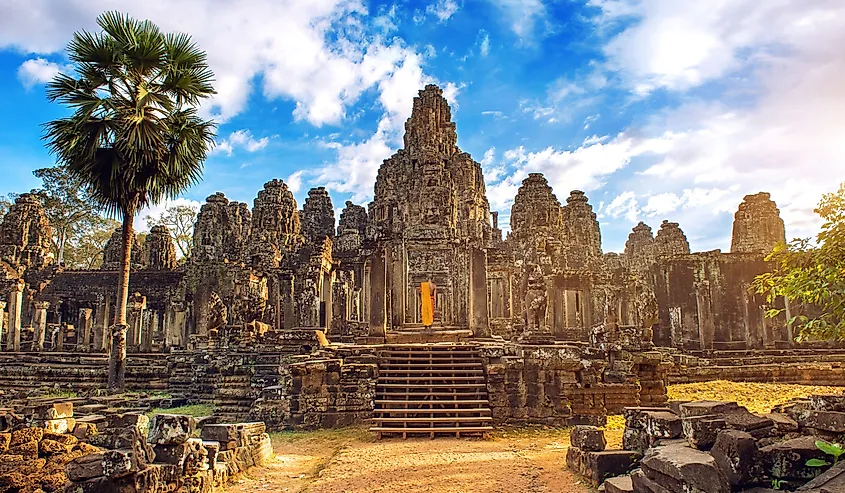
Angkor Wat is a large religious temple at Angkor, in Cambodia. Making up a total area of 400 acres, Angkor Wat is the largest religious monument in the world and the pinnacle of Khmer design. The temple is almost 900 years old, and a program established by UNESCO now protects this important location and its surroundings.
The Origins of the Lost City of Angkor Wat
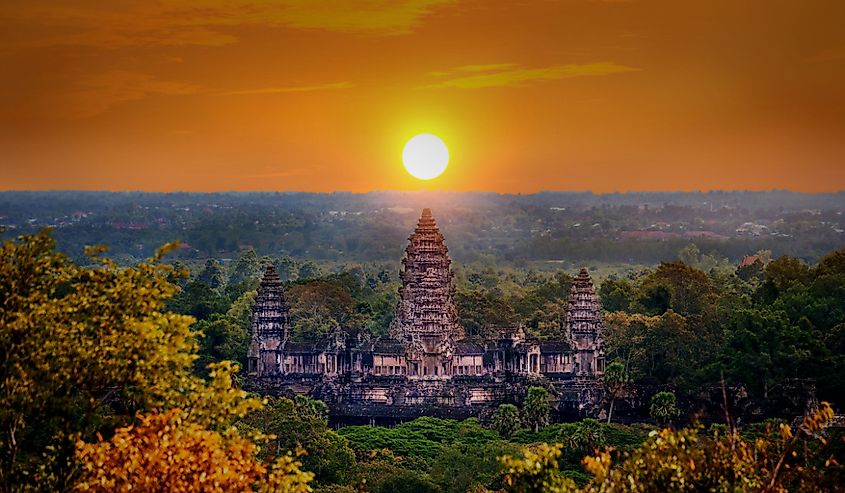
A large dynasty of Khmer monarchs reigned over Angkor, the country's capital from the 9th to the 15th century. The Khmer Empire was one of the biggest, wealthiest, and most advanced kingdoms in Southeast Asia. Between the end of the 9th century and the beginning of the 13th century, multiple construction projects were undertaken; though none as notable as Angkor Wat.
Suryavarman II initiated its construction in the middle of the 12th century, but the stunning complex took almost three decades to build. It was initially meant as a temple for the Hindu god Vishnu, and as a sizable shrine to hold the ruler's cremated remains. Though by the end of the century, it became a Buddhist temple for all.
The History of the Temple
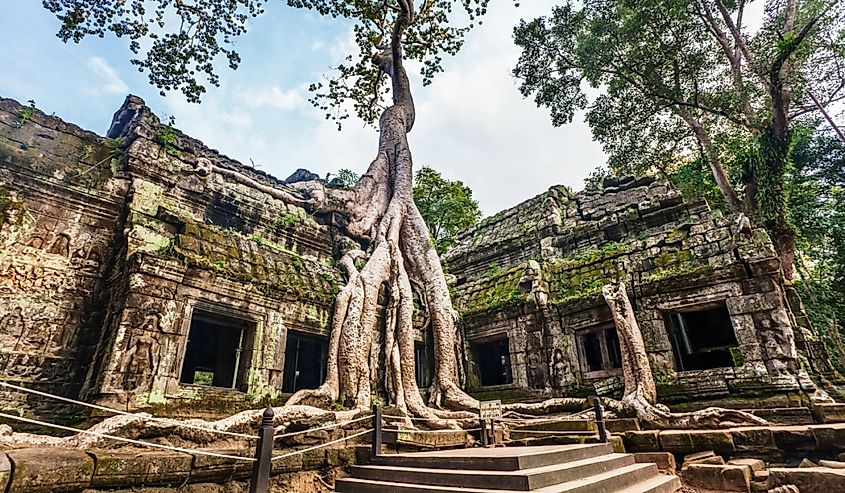
Buddhist monks took care of Angkor Wat for years until the capital transferred to Phnom Penh in 1432. In the early 1500s, the site was largely abandoned, aside from the few monks left on the premises who still maintained it.
In 1586, a Portuguese monk named Antonio de Madalena was one of the temple's earliest Western visitors. It was later rediscovered and introduced to the western world by Henri Mouhot, a French explorer, in the 1840s, who referred to Angkor Wat as being "grander than anything left to us by Greece or Rome."
It was around the early 1900s that the French restored the site. They still ruled over Cambodia for most of the 20th century before the civil war, and they planned to have it open for tourism. However, the conflicts between the people and the Khmer Rouge regime brought the idea to a halt. Cambodia finally gained its independence from France in 1953, and control over Angkor Wat along with it.
While there was considerable damage and theft among the temples at Angkor during the political and military upheavals of Cambodia in the second half of the 20th century, what harmed the structure most was neglect. It was an easy victim to increasing vegetation, eroding water, and the elements. In 1992, the marvelous site became a UNESCO World Heritage site, which only increased its popularity, bringing almost two million visitors to it every year.
The Architecture of Angkor Wat
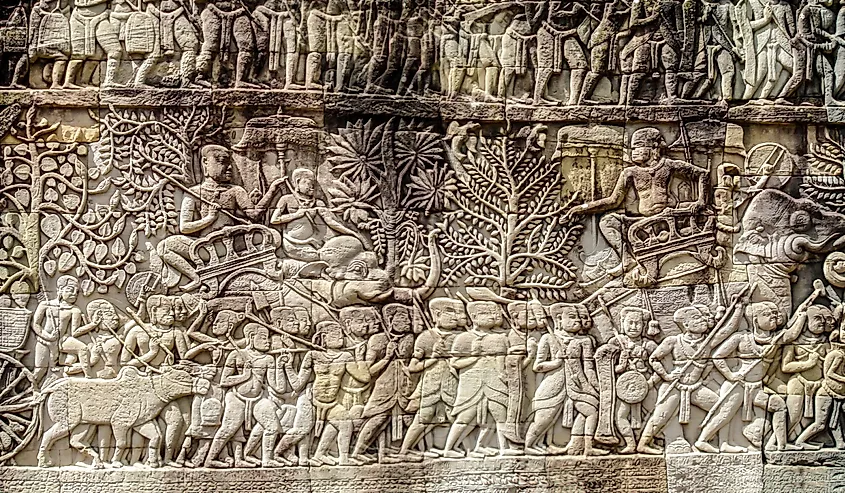
The temple is a breathtaking spot, made even more stunning in the early mornings or evenings, when the sun is in the middle of the sky, peering through the walls. In keeping with the association between the setting sun and death, the structure faces west. The bas-reliefs, viewed from left to right in accordance with Hindu burial rituals, symbolize this importance.
Angkor Wat serves as an earthly representation of the cosmos and is reminiscent of a small version of the universe made of stone. The monument's main tower rises from its center, representing the mythological mountain Meru, the heart of the cosmos. Its five towers are a representation of Meru's five peaks. The surrounding moat represents the oceans beyond, and the outer wall represents the mountains at the edge of the globe.
On the outside sandstone walls, there are 1,200 square meters of carved reliefs depicting eight different Hindu myths. "The Churning of the Ocean of Milk", which represents a tale about the beginning of time and the creation of the universe, is perhaps the most significant carving.
The Remains of Angkor Wat
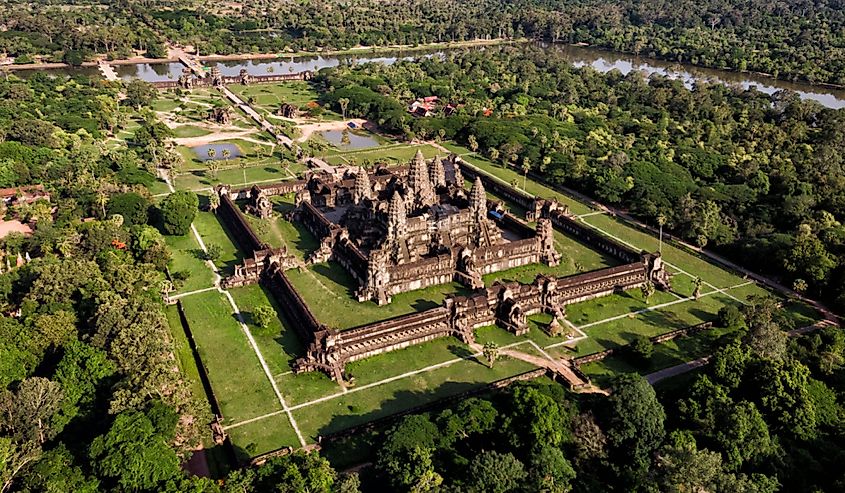
The temple features a large enclosure wall that divides the sacred temple grounds from the perimeter moat and acts as a wall of security from outside threats. There is also a large central sanctuary, marked by five stone towers located within the temple, made up of three galleries. The tower above the main shrine reaches nearly 70 feet into the air at its highest point.
Comprised of primarily sandstone, wood, and other less durable materials, only a portion of the temple and city wall remain today.
Visiting the Lost City of Angkor Wat
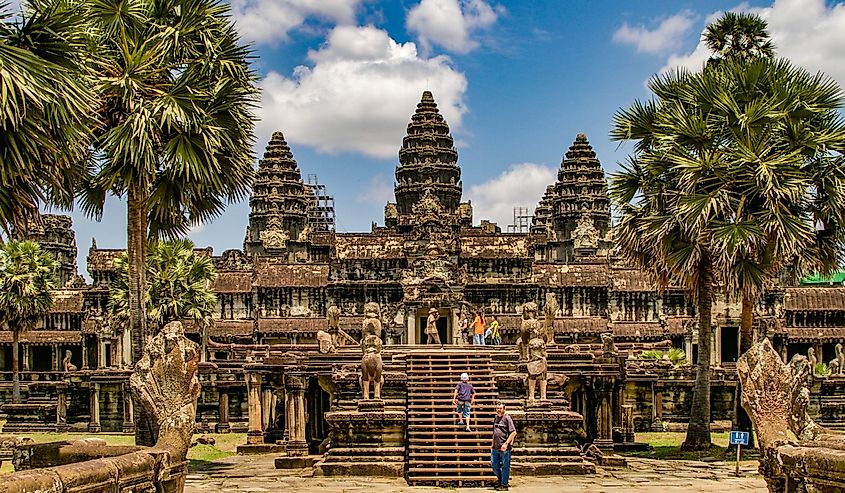
With the majority of inhabitants in Cambodia now Buddhist, Angkor Wat maintained its significance over the country. The temple has developed into a significant national icon for Cambodia, whose flag features the silhouette of Angkor Wat. Considering it is one of Cambodia's most popular attractions, it is quite easy to get to it. The airport outside of the city, Siem Reap International Airport, is the most direct route to get to Siem Reap and Angkor Wat.
For a fee, tourists can explore the astonishing temple, though it is nearly impossible to see it all in just a day. The structure is far too vast and there are too many things to discover. However, the place is so complex and spectacular, it is worth the extra few days one can spend visiting it.
In Conclusion
Whether you are looking for a chance to further discover Cambodia's magnificent history, or for a beautiful monument flowing with stories and culture to fill you with inspiration, Angkor Wat is the perfect destination.











